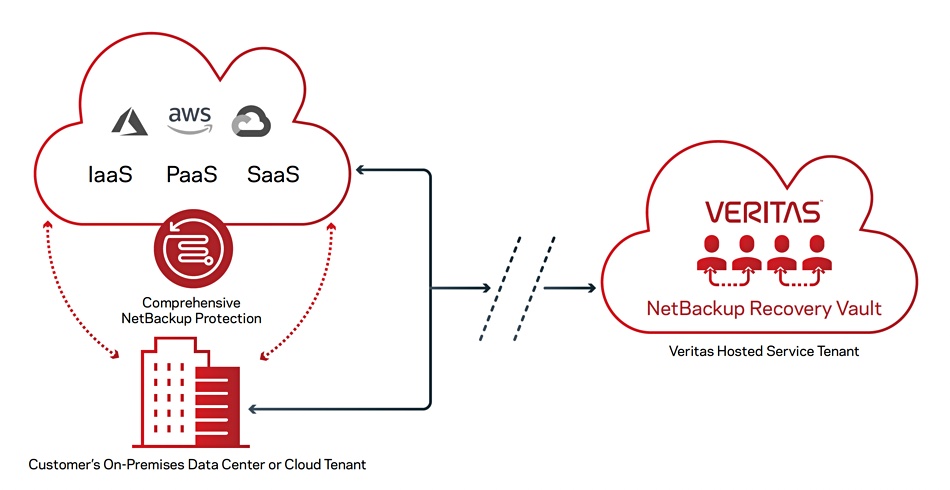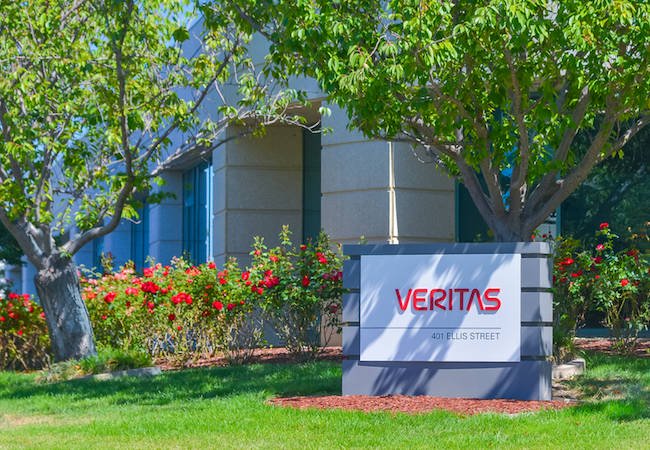Veritas thinks the public cloud and growing IoT edge are where it can increase its data protection market share using re-engineered software and AI-enhanced operations.
This long-lived enterprise data protection supplier has been developing its NetBackup (NBU) product to provide what it calls autonomous data management (ADM) with AI-assisted app discovery and protection management. NBU has ransomware attack recovery through immutable vaults in the public cloud, cloud-type scalability of its core data protection engine, and a single management point. Now it believes it can grow from its existing on-premises and public cloud VM protection base by protecting cloud-native apps, data in the public cloud, and data at the edge.

We were briefed on this strategy by Santhosh Rao, senior director for product and portfolio strategy at Veritas, who joined the company in January, coming from being a senior director and lead analyst at Gartner. Prior to that he was a reference architect at NetApp and a senior product engineer at Dell.
Rao said that, with v10 NetBackup, Veritas took the FlexScale appliance engine software in NBU 9.1 and re-engineered and containerized it so that it could run in AWS or Azure using EKS. This is called Veritas CloudScale technology. Immediately the protection engine became more scalable and Rao said: “Now we can look at delivering everything as a service.”
He told us: “We can protect data both on-premises and in the cloud.” Previously Veritas’s Cloud Point, a non-cloud-native extension of NBU, protected apps in the cloud, such as Oracle and SQL, running in AWS and Azure virtual machines by using the cloud provider’s snapshot facility.
Rao said NBU 10 has a 40 percent lower operating cost over deploying an older version of NetBackup as a virtual instance in the cloud. He said: “While our competitors call themselves ‘cloud native’ backup providers, they are still using the virtualized model that Veritas has evolved beyond.”
Rao said NBU 10 can now protect more apps in the cloud, such as O365, thanks to the January 2021 HubStor acquisition, and its coverage is widening “Salesforce protection is coming soon,” as is protection of Azure SQL Managed and Amazon DynamoDB. Any app inside a VM can be protected, he told us.
There is single-pane-of-glass management of the Veritas on-premises and public cloud data protection facilities and “we can monitor it through NetBackup IT Analytics,” Rao said. This was previously called Veritas APTARE, Veritas having acquired Aptare back in 2019.
Ransomware recovery and discovery
Veritas helps customers combat ransomware with the NetBackup Recovery Vault, a single immutable vault in the public cloud to store on-premises and public cloud primary and secondary data. It has a built-in malware scanning engine and customers can also use third-party scanners. Recovery Vault is a Veritas-managed turnkey service hosted in AWS or Azure and integrated with NBU. It has a virtual air-gap as it is a separate cloud tenant from a customer’s own cloud account.

According to Rao, when a customer posts an online as-a-service application, NBU 10 auto-discovers it and can apply a pre-defined protection template, covering things such as deduplication and Recovery Vault presence. It can then monitor the backup footprint, scaling resources up or down as required.
Now, with this ability to provide cloud-based data protection as a service, with a high degree of autonomy through AI, app discovery, ransomware protection, and central management, Rao believes Veritas is well placed to protect both the public cloud and edge sites, the new end points.
The new greenfields
“The public cloud market is not saturated. It’s still a greenfield market in my view, with a stronger focus by customers to protect IaaS and SaaS together,” Rao said. “Once that market is captured then there will be the edge. The public cloud is a significantly higher opportunity at this point.” The edge data protection market includes the traditional remote office, branch office (ROBO) sites plus 5G end points and manufacturing locations.
“The end points will be cloud-native [and] the modern retail store is going cloud-native.” The legacy ROBO sites and the newer, emerging edge sites will converge and both be containerized. “This market will become very large.”
Veritas’s platform can happily co-exist with them and could use flash-based storage for high-performance recovery. The company can also supply data protection facilities for MSPs to pass on to their customers. Rao said: “Lots of telcos and service providers use it.” With telcos being a main supply channel for 5G edge sites, we can sense how Veritas thinks it is well positioned here.
The company’s public cloud and data-intense edge vision is exactly why Rao joined Veritas earlier this year. He said: ”We as a company have probably worked the hardest to make this happen. We have retooled and re-engineered the product. Containerization is key. It’s execution from here on. We want to focus on growth. We are going after customers moving to the cloud and will help them.”
All of this is a sign that Veritas has regained a growth mojo. It wants to expand and grow its business and sees the Kubernetes, DevOps focus of modern business along with hybrid multi-cloud ideas as giving it a new route to growth and creating two greenfield markets; the public cloud and emerging edge cloud-native edge.
The re-engineered NBU 10 and its vision may just give it an edge over some competitors and we’ll see how that plays out over the next few years.








